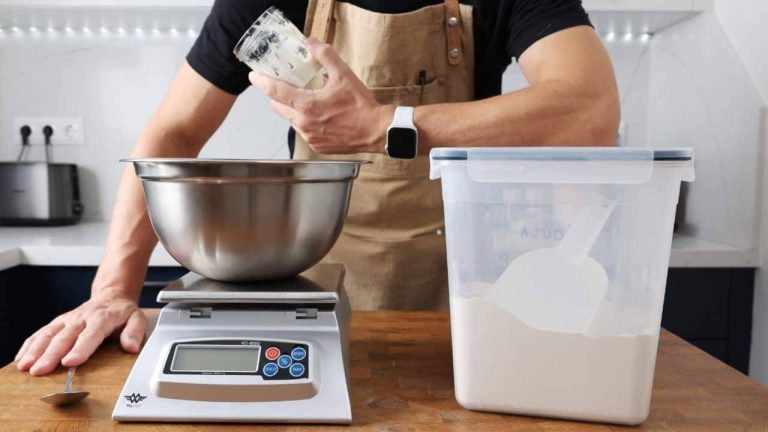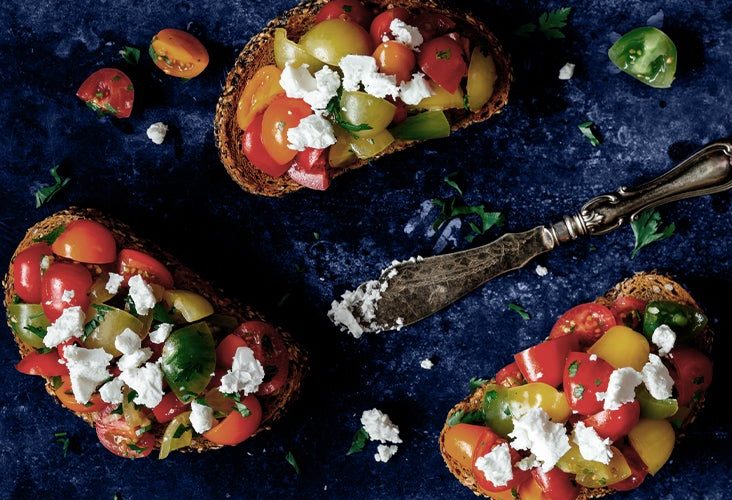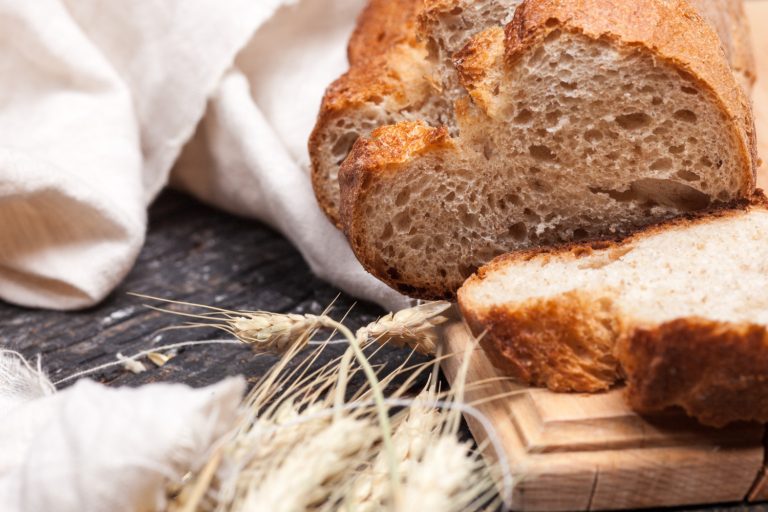How to Convert International Bread Recipes to Sourdough: A Step-by-Step Guide
The sourdough baking craze hit an incredible 400% growth at the time of 2020. Many homebakers struggled to adapt their favorite international bread recipes to work with their sourdough starter.
Adapting traditional bread recipes to sourdough versions can feel like navigating a maze. Each country’s bread has unique ingredients and techniques that make the adaptation more complex. The recipe’s cultural heritage adds another layer of complexity to the process.
Traditional yeast recipes shouldn’t limit your cravings for Japanese milk bread or Turkish pide. The right principles and adjustments will help you create amazing sourdough versions of almost any bread while keeping its authentic flavor and character.
This detailed guide shows you tested methods for adapting international bread recipes to sourdough. You’ll learn to convert everything from Asian sweet buns to European specialty loaves into delicious sourdough creations. It’s time to fire up your ovens and start baking!
Understanding International Bread Basics
Let’s explore the world of international breadmaking before we convert recipes to sourdough—the simple principles of bread-making form the foundations of successful sourdough conversions.
Common Ingredients Across Cultures
Bread recipes from around the world share remarkable similarities in their simple ingredients. Most breads have these essential components:
- Flour (the primary structure builder)
- Water (for hydration and gluten development)
- Salt (for flavor and fermentation control)
- Some form of leavening (traditional or commercial)
Regional Flour Types and Properties
Flour characteristics change substantially based on geography. Here’s what you’ll typically find:
| Region | Common Flour Type | Key Properties |
|---|---|---|
| Asia | Rice, White Wheat | Lower protein, fine texture |
| Middle East | High-protein Wheat | StVitalluten, coarse texture |
| Europe | Soft Wheat, Rye | Medium protein, versatile |
| Americas | Hard Red Wheat | High protein, excellent for sourdough |
Traditional Leavening Methods
People used three main leavening syscentral before commercial yeast became common:
Traditional sourdough starters flourished in wine-making regions like France, while beer barm (yeast skimmed from brewing) dominated beer-producing areas like Britain. Some cultures made flatbreads using steam leavening.
I love how these traditional methods align with modern sourdough conversion techniques. For instance, converting international recipes to sourdough often returns them to their historical roots. Natural fermentation in sourdough mirrors these traditional leavening methods closely, making our conversion process more authentic.
These bread-making fundamentals help preserve traditional recipes’ integrity while adapting them to sourdough methods. Successful conversion begins with respect for these simple bread-making principles from different cultures.
Essential Sourdough Conversion Principles
Converting traditional recipes to sourdough requires three simple principles derived from rigorous testing and experimentation. These principles are the foundations of transforming any bread recipe into a sourdough version.
Fundamental Conversion Ratios and Rules
The quickest way to convert recipes successfully comes from understanding the starter-to-yeast ratio. Experience shows that 100g of active sourdough starter can replace one 5-7g packet of commercial yeast. The recipe needs two substantial adjustments:
- Reduce the recipe’s flour by 50g for every 100g of starter used
- Decrease the liquid content by 50g to account for the starter’s hydration
Adjusting Hydration Levels
Hydration plays a vital role in recipe conversion to sourdough. The hydration calculation uses this simple formula:
| Component | Calculation Method |
|---|---|
| Basic Hydration | (Water Weight ÷ Flour Weight) × 100 |
| Total Hydration | [(Water + Starter Water) ÷ (Flour + Starter Flour)] × 100 |
Different flour types need varying hydration levels based on their protein content. High-protein flours need more water, while softer flours work better with less. A 70-75% hydration level sisan excellent starting point for most conversions.
Temperature and Climate Considerations
Temperature substantially affects sourdough’s fermentation rates. Most conversions work best at 75-78°F (24-25°C). The process needs these adjustments for different conditions:
Warm Climate Adjustments
- Reduce starter amount by 25%
- Use cooler water (65-70°F)
- Decrease bulk fermentation time
Cold Climate Adaptations
- Increase starter portion by 25%
- Use warmer water (80-85°F)
- Extend bulk fermentation time
Dough temperature monitoring makes a big difference – small temperature changes can alter fermentation timing. Humid conditions need 5-10% less hydration to maintain dough structure, while dry climates might benefit from a slight increase.
Converting Asian Bread Recipes
Asian bread recipes can be tricky to convert to sourdough. The challenge lies in keeping their signature softness and subtle flavors intact. We spent many hours getting these conversions right, especially when you have favorites like Japanese milk bread (Shokupan) and other Asian classics.
Working with Rice Flour Blends
Our sourdough conversions work best with specific flour combinations. Here’s our tested blend ratio:
| Flour Type | Percentage |
|---|---|
| White Rice Flour | 40% |
| Brown Rice Flour | 30% |
| Glutinous Rice Flour | 20% |
| Tapioca Starch | 10% |
This blend gives you that chewy texture Asian breads are known for. Glutinous rice flour is a vital ingredient that creates a distinctive bounce and pull in Asian bread.
Adapting Sweet Bread Recipes
The secret to converting Asian sweet bread recipes is the Tangzhong method. We pre-cook 5-10% of the flour weight with water until it forms a paste. This technique creates the cloud-like texture Asian breads are famous for.
Your sourdough conversion will soar if you:
- Use a sweet,s tiff starter (50% hydration with added sugar)
- Keep dough temperature at 80°F to get the best fermentation
- Drop hydration to 67% to balance out the Tangzhong
Maintaining Texture and Structure
The signature texture of Asian bread needs careful attention to enrichment and fermentation. Sourdough’s acidity can improve shelf life, but it requires careful control to keep those delicate flavors.
Your enriched Asian bread recipes need a mature, active starter to handle added fats and sugars. Bread flour with 11-13% protein content works best. It gives you the structure you need while keeping the bread tender.
Temperature makes a big difference. We keep our dough at 80°F during the 4-hour bulk fermentation. A cooler kitchen (70-75°F) means longer fermentation—about 8-10 hours. This slower process creates a milder flavor that better matches traditional Asian bread profiles.
Let your converted Asian sourdough breads cool completely before cutting them. Your patience will pay off with proper crumb structure and softness that lasts for days.
Converting Middle Eastern Flatbreads
Middle Eastern flatbreads have a special place in our hearts. Converting them to sourdough brings them back to their original roots. Our tests show that traditional Middle Eastern bread-making techniques work perfectly with sourdough principles.
Handling High-Protein Flours
Middle Eastern flatbreads use flour with 12-14% protein content. The conversion to sourdough needs specific adjustments based on flour strength:
| Flour Type | Protein % | Hydration Adjustment |
|---|---|---|
| Strong Bread Flour | 13-14% | +5% water |
| All-Purpose Flour | 11-12% | Standard hydration |
| Traditional Middle Eastern | 12-13% | +2-3% water |
Adding 20-30% whole grain flour creates that authentic heart-baked flavor and keeps the characteristic chewy texture of Middle Eastern flatbreads.
Fermentation Time Adjustments
The conversion of traditional flatbread recipes to sourdough needs careful attention to fermentation timing. Our tests led to these guidelines:
- Long fermentation (18-24 hours) to boost digestibility
- Initial 4-hour bulk fermentation at room temperature
- Final proof of 2-3 hours before shaping
- Optional cold retardation to boost flavor development
Preserving Traditional Flavors
Temperature control plays a vital role in maintaining authentic flavors during conversion. During fermentation, the dough stays at 78-80°F (25-27°C) to create the perfect balance of tang and traditional taste.
A mature starter fed with a mix of whole grain and white flour helps develop complex flavors. These flavors naturally complement traditional Middle Eastern seasonings like za’atar and sesame.
Sourdough discard works best in flatbread recipes. Its mild acidity boosts natural flavors and improves the bread’s shelf life. With proper storage, flatbreads made with discard stay soft and pliable for several days.
Understanding fermentation’s role in traditional Middle Eastern bread-making leads to successful conversions. Proper fermentation time and dough temperature create flatbreads that honor their cultural heritage. Natural fermentation also makes them easier to digest.
These converted flatbreads last longer than their yeasted counterparts. With proper storage, they stay soft and pliable for up to a week. The natural acids from fermentation preserve the bread and enhance its flavor profile.
Converting European Specialty Breads
European specialty breads are at the peak of traditional baking. We found that converting these recipes to sourdough required a delicate balance of science and art. The largest longitudinal study of converting everything from brioche to complex grain loaves helped us develop reliable methods that preserve the essence of these beloved breads.
Enriched Dough Conversions
Converting enriched European doughs to sourdough versions creates unique challenges because of their high fat and sugar content. The core team determined that success depends on the fermentation schedule and starter strength. Here’s our tested approach:
| Enrichment Level | Starter Percentage | Fermentation Time |
|---|---|---|
| Light (< 15% fat) | 25% of flour weight | 6-8 hours |
| Medium (15-30% fat) | 30% of flour weight | 8-12 hours |
| Heavy (> 30% fat) | 35% of flour weight | 12-16 hours |
Adding butter at the end of mixing works best when converting recipes like brioche or challah to sourdough. The gluten needs to develop first. This method consistently gives us tender crumbs and complex flavors.
Adapting Complex Shapes
We became skilled at keeping traditional European bread shapes in sourdough versions. Proper dough strength comes from strategic folding during bulk fermentation. Complex shapes like baguettes or decorative braids need:
- Building tension through precise pre-shaping
- Allowing 30-minute bench rests between shaping steps
- Creating a tight outer skin for better scoring patterns
- Maintaining dough temperature at 75°F (24°C) during shaping
Sourdough versions need about 5% less hydration than original recipes to keep their shape properly.
Managing Different Grain Types
European bread traditions use grains of all types. Our work with Italian millers taught us valuable lessons about flour classification and how it affects sourdough conversion.
Type 00 flour needs 2-3% more hydration and an extra hour of bulk fermentation. Type 2 flour needs slightly less hydration but ferments faster due to its higher mineral content.
Spelled flour, with its 17% protein content, needs gentle handling. Using up to 20% spelled instead of base flour adds complexity without harming the structure.
Rye-based recipes need these adjustments:
- Reduce overall hydration by 10%
- Shorten bulk fermentation time by 25%
- Expect less dramatic oven spring
- Focus on developing flavor through long-cold-proofing
Each grain type has unique properties that affect successful conversion. Einkorn flour, with 18% protein content, needs less hydration and produces denser bread.
Ash content in flours affects fermentation rates and final texture. European flours with higher ash content need more time to ferment but create more complex flavors in the final bread.
Conclusion
Traditional bread recipes transformed into sourdough versions create endless possibilities while preserving ancient baking traditions. Our exploration of international bread adaptations reveals that successful conversion depends on understanding regional ingredients, proper hydration levels, and temperature control.
Each bread type requires specific adjustments. Asian breads jeed precise temperature control and specialized flour blends. Middle Eastern flatbreads work best with high-protein flour. European specialties depend on careful enrichment balancing and grain selection.
The original recipe’s character deserves respect while incorporating sourdough’s unique properties. You can raise your bread and pizza-making skills with an authentic artisanal sourdough starter from The Yeast We Can Do. Email john@theyeastwecando.com to get our premium starter, which helps create exceptional bread with perfect tangy flavor and signature crust.
Patience and practice lead to expertise naturally. Simple conversions work best at first. Document your results and gradually work on complex recipes. Your sourdough experience will yield healthier, more flavorful versions of beloved international breads that connect you to centuries of baking tradition.
FAQs
1. How is sourdough bread produced in large-scale commercial bakeries?
Commercial bakeries often utilize the Chorleywood bread process, developed in 1961, to make sourdough bread. This method includes using water infused with carbon dioxide to form bubbles in the bread’s crumb, typically during the natural proofing stage in traditional sourdough baking.
2. Does sourdough bread have the same flavor worldwide?
No, the taste of sourdough bread can vary significantly depending on the region in which it is made, such as the US or Asia. This variation is mainly due to the microbial diversity in different environments, affecting the sourdough starter’s wild yeast and lactic acid bacteria.
3. Can different types of flour be used in sourdough bread recipes?
Yes, you can feed your sourdough starter with various types of flour. It’s important to monitor how the starter reacts after switching flours. Maintain the starter at a warm temperature and ensure it is fed regularly. The flour used for feeding the starter does not necessarily have to match the flour used in your sourdough bread recipe.
4. What is a crucial but often overlooked ingredient in sourdough bread?
A key ingredient that might be overlooked in sourdough bread making is filtered water. The quality of water used can significantly impact the outcome of your sourdough, potentially more so than the starter, flour, or kneading technique.






